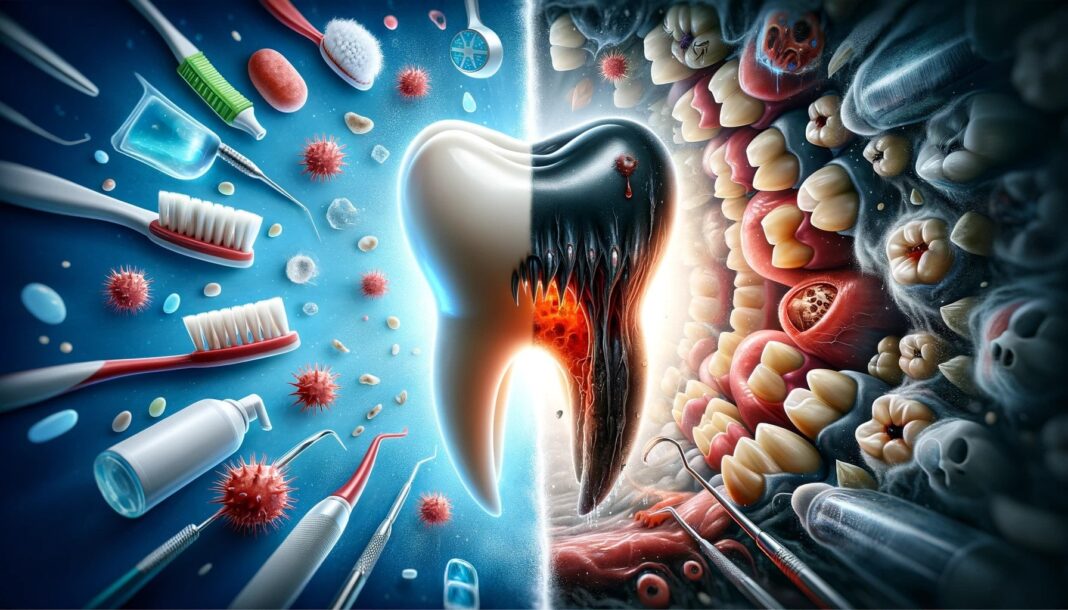Tooth infections, also known as dental abscesses, are not just painful nuisances; they are severe medical conditions that, if left untreated, can have life-threatening consequences. The question “How long until a tooth infection kills you?” underscores the urgency and potential severity of such infections. It’s crucial to understand that while death from a tooth infection is rare, the possibility highlights the importance of prompt dental care and good oral hygiene.
How long before a tooth infection kills you?
A tooth infection can become life-threatening in days to weeks if treatment is not received. However, an exact time frame is difficult to establish. Serious consequences may result from the infection spreading to other body parts or the bloodstream. On the other hand, tooth infections seldom result in death and are frequently treatable with prompt care.
Understanding Tooth Infections
A tooth infection occurs when bacteria invade the dental pulp, the innermost part of the tooth containing nerves, blood vessels, and connective tissue. This can lead to an abscess, a pocket of pus that can spread to surrounding tissues. Tooth infections can result from untreated dental cavities, injuries, or previous dental work (source: tooth infection fatal).
The Path from Infection to Severity
The timeline for a tooth infection to turn fatal varies greatly depending on the individual’s immune system, other health conditions, the type of bacteria involved, and whether or not the person seeks treatment. Without intervention, an infection can spread to other parts of the body within days to weeks, leading to potentially fatal conditions such as sepsis, a widespread disease in the body, or Ludwig’s angina, a type of cellulitis that can swell the neck and throat tissues to the point of obstructing the airway.
Warning Signs and Symptoms
Early recognition and treatment of a tooth infection are vital. Symptoms to watch for include:
- Severe, persistent toothache
- Sensitivity to hot and cold temperatures
- Swelling in the face or cheek
- Tender, swollen lymph nodes under the jaw or in the neck
- Fever
- Sudden rush of foul-tasting, smelly fluid in your mouth and pain relief if the abscess ruptures
Treatment: The Key to Prevention
Prompt treatment of tooth infections is crucial to prevent the spread of disease. Treatment options include:
- Antibiotics to fight the infection
- Draining the abscess
- Root canal treatment to remove the infected pulp and seal the tooth
- Tooth extraction if the tooth cannot be saved
Prevention: Your First Line of Defense
Preventing tooth infections is the most effective way to avoid their potentially fatal consequences. Key prevention strategies include:
- Regular dental check-ups and cleanings
- Good oral hygiene practices, including brushing twice a day and flossing daily
- Eating a healthy diet and limiting sugary snacks and drinks
- Using fluoride toothpaste and mouth rinses
- Seeking prompt treatment for tooth decay, gum disease, and any dental injuries
The Bottom Line
While the question “How long until a tooth infection kills you?” may seem alarming, it serves as a critical reminder of the importance of dental health. Although tooth infection deaths are rare, untreated infections’ consequences can be severe and potentially life-threatening. Recognizing the signs of a tooth infection and seeking immediate dental care can save lives. Remember, prevention is the best cure, and maintaining good oral hygiene and regular dental visits are your best defense against tooth infections.
In conclusion, tooth infections require immediate attention. While the timeline for an untreated infection to become life-threatening can vary, the risk underscores the importance of proactive dental care. Protect your health by maintaining good oral hygiene, scheduling regular dental check-ups, and seeking prompt treatment for dental issues.

